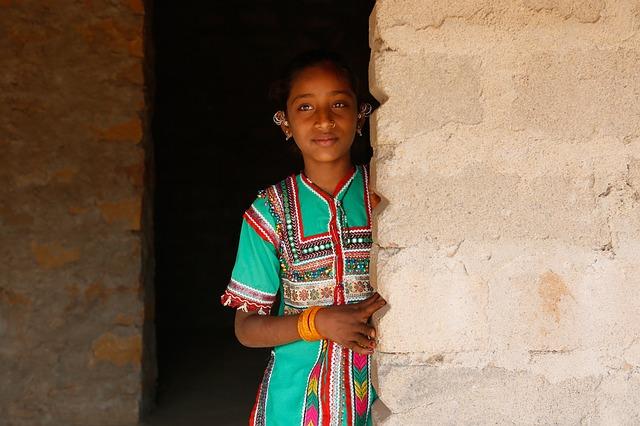
Providing productive jobs with decent earnings to all has to be a major goal of any development model. Productive employment not only enables households to access necessary goods and services, but it also gives them dignity and self-esteem. Unfortunately, Gujarat has done poorly in the field, despite the high rate of growth of its economy.
Gujarat’s economy has taken a big jump in its growth rate since 2002-03. However, it viewed productive employment as a by-product of growth, and assumed that growth would create adequate jobs for all. The ambition of the State government has been to make Gujarat the fastest growing economy in Asia. It has therefore focused on improving governance and improving infrastructure (both for the corporate sector) and has offered unprecedented subsidies and incentives to Indian/foreign corporate investments. In order to make Gujarat the most attractive centre for corporate investment, the government also invited highly capital intensive state-of-the-art technologies. Though these steps made Gujarat a rapidly growing State, it changed the political economy radically in favour of the corporate sector, left limited funds for the social sector and did not provide a level playing field to medium and small industries, which so far enjoyed an important place in the economy.
Due to the limited funds spent on education (3 to 3.75 per cent of GDP as against the required 6-8 per cent), and limited efforts made, the level and quality of education remained low, which did not allow masses to take part in the on-going growth process. Just 6 to 7 per cent workers therefore got jobs as core workers (regular and permanent workers) and the rest are employed as contract or casual workers. The economy of Gujarat has become a highly dualistic economy with a small high-tech high-income sector and a large informal and traditional sector.
Gujarat has been the only State to record a decline in the share of formal secured employment over the past decade. Also, the wage rates of casual and regular, rural and urban workers have been almost at the bottom of the 20 major States in India. Gujarat also recorded the lowest increase in wage rates among the 20 major States in India.
Gujarat has always had the highest workforce participation rate after Haryana (for example, 76.4% for male workers above 15 years in 2015-16 against 72.0% in India). The argument is frequently made that Gujarat has provided employment to a large number of persons; however, the quality of employment was always poor resulting in a high incidence of multi-dimensional poverty (42 per cent in 2014) compared to other States: Gujarat’s share of informal workers who earn low wages and have poor social security is about 94 per cent. Gujarat has been the only State to record a decline in the share of formal secured employment over the past decade. Also, the wage rates of casual and regular, rural and urban workers have been almost at the bottom of the 20 major States in India. Gujarat also recorded the lowest increase in wage rates among the 20 major States in India. For example, the wage rate of regular unskilled workers in Gujarat was Rs. 306 (Rs. 313 for males and Rs. 253 for females) as against Rs. 400 in India (males Rs. 412, females Rs. 310).
Gujarat is experiencing a severe crisis in the form of a shortage of productive jobs with decent work for the youth. This is reflected in the rising number of job-seekers with arts/commerce and engineering graduates in the past five to seven years. The highly capital intensive and skill intensive jobs in the modern sector (productive capital per worker in the factory sector rose from was Rs. 11 lakh in 2000-01 to Rs. 40 lakhs in 2015) are not available except for low-paid casual and contract workers. Also, the recent slowdown of the global economy has affected employment adversely, as Gujarat is a highly export-oriented economy.
Gujarat is experiencing a severe crisis in the form of a shortage of productive jobs with decent work for the youth. This is reflected in the rising number of job-seekers with arts/commerce and engineering graduates in the past five to seven years.
Again, severe depletion and depreciation of natural resources has affected adversely the livelihoods of almost 30-40 per cent of the workforce that depends on natural resources for their livelihoods (farming, animal husbandry, dairying, fishery, horticulture etc). Low MSP, poor crop insurance and low investments in agriculture, have reduced productive employment in these sectors and caused large scale distress migration to prosperous areas.
Productive employment has also been affected by steps like demonetisation and GST. A number of people, small businesses and farmers were affected by a loss of livelihood, closure of business and increasing debts.
Most labour rights including core labour standards are blatantly violated in the state today largely due to poor commitment to labour.
Many of the employment generating programmes including MGNREGA have not made much of an impact at the macro level. And some of the government programmes seem to have in-built constraints in producing sustainable development. The Micro, Small &Medium Enterprises sector which is labour intensive and can be accessible to many, has suffered as incentives have gone to premium and mega industries.There is a need to support this neglected sector which was doing well earlier.. The Government can give support with infrastructure, power, technical assistance, credit and special incentives. Most labour rights including core labour standards are blatantly violated in the state today largely due to poor commitment to labour.
It is a shame that a rich state like Gujarat has 35 to 40 per cent working poor living miserably. Strengthening the labour department will not only create employment but also will have a highly positive multiplier effect on the State’s economy.







